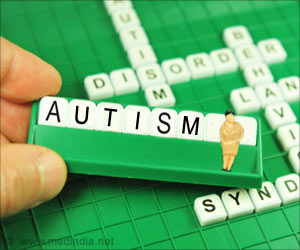A recent American research has revealed that soccer-ball-shaped carbon nanoparticles may be the answer for Parkinson's disease, Alzheimer's and even cancer.
A recent American research has revealed that soccer-ball-shaped carbon nanoparticles may be the answer for Parkinson's disease, Alzheimer's and even cancer.
The study, conducted by a Los Alamos National Laboratory toxicologist and a multidisciplinary team of researchers, has been published in Toxicology and Applied Pharmacology.The research represents the first-ever observation of this kind for spherical fullerenes - cage-like molecules composed of 60 carbon atoms.
Fullerenes, also known as buckyballs, take their names from the late Buckminster Fuller because they resemble the geodesic dome concept that he popularised.
Each buckyball is a skeletal cage of carbon about the size of a virus. They show potential for creating stronger, lighter structures or acting as tiny delivery mechanisms for designer drugs or antibiotics, among other uses. About four to five tons of carbon nanoparticles are manufactured annually.
Los Alamos toxicologist Rashi Iyer, the principal research lead and coauthor of the paper, said: "Nanomaterials are the 21st century revolution.
"We are going to have to live with them and deal with them, and the question becomes, 'How are we going to maximize our use of these materials and minimize their impact on us and the environment?'"
Advertisement
The differences in the buckyballs lay in the spatial arrangement of short branches of molecules coming off of the main buckyball structure.
Advertisement
The scientists discovered that cells exposed to the tris configuration underwent premature senescence - what might be described as a state of suspended animation. In other words, the cells did not die as cells normally should, nor did they divide or grow.
This arrest of the natural cellular life cycle after exposure to the tris-configured buckyballs may compromise normal organ development, leading to disease within a living organism. riefly, the tris buckyballs were toxic to human skin cells.
Furthermore, the cells exposed to the tris arrangement caused unique molecular level responses suggesting that tris-fullerenes may potentially interfere with normal immune responses induced by viruses.
The team is now pursuing research to determine if cells exposed to this form of fullerenes may be more susceptible to viral infections.
Ironically, the discovery could also lead to a novel treatment strategy for combating several debilitating diseases.
In diseases like Parkinson's or Alzheimer's, nerve cells die or degenerate to a nonfunctional state. A mechanism to induce senescence in specific nerve cells could delay or eliminate onset of the diseases.
Similarly, a disease like cancer, which spreads and thrives through unregulated replication of cancer cells, might be fought through induced senescence. This strategy could stop the cells from dividing and provide doctors with more time to kill the abnormal cells.
Because of the minute size of nanomaterials, the primary hazard associated with them has been potential inhalation - similar to the concern over asbestos exposure.
Iyer said: "Already, from a toxicological point of view, this research is useful because it shows that if you have the choice to use a tris- or a hexa-arrangement for an application involving buckyballs, the hexa-arrangement is probably the better choice."
She added: "These studies may provide guidance for new nanomaterial design and development."
Source-ANI
SAV














